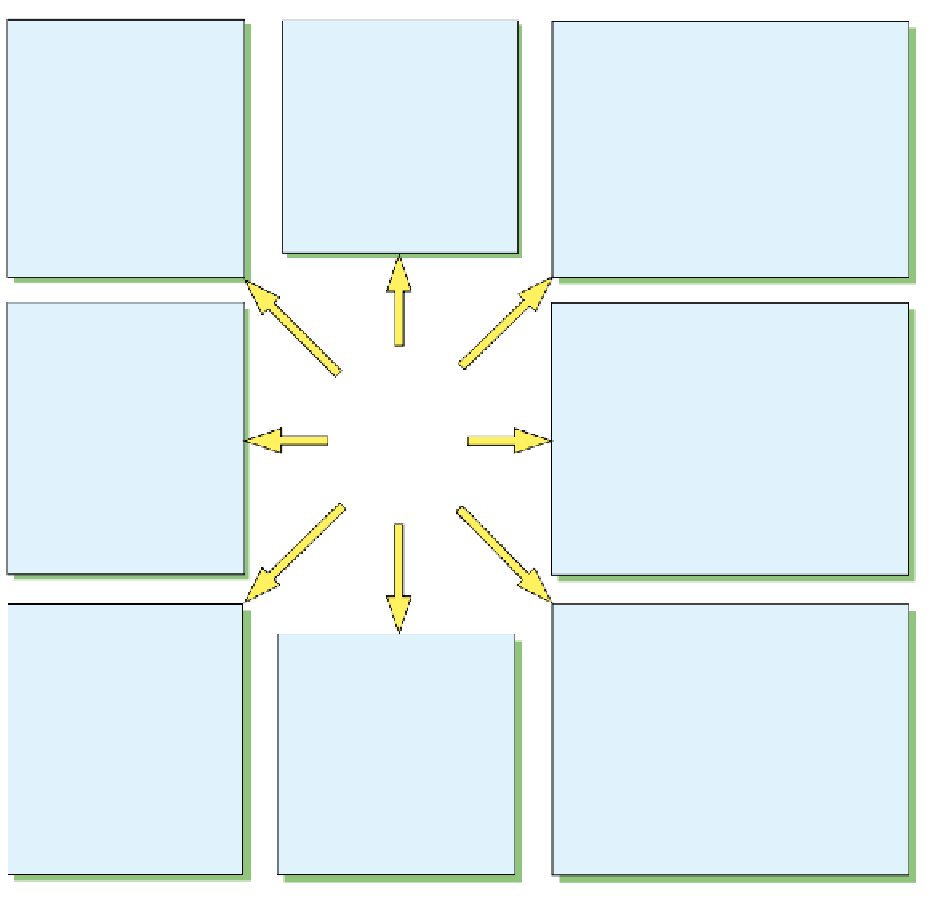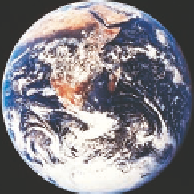Environmental Engineering Reference
In-Depth Information
Agriculture
Water Resources
Forests
• Shifts in food-growing
areas
• Changes in water supply
• Decreased water quality
• Increased drought
• Increased flooding
• Snowpack reduction
• Melting of mountaintop
glaciers
• Changes in forest composition
and locations
• Changes in crop yields
• Disappearance of some forests,
especially ones at high elevations
• Increased fires from drying
• Increased irrigation
demands
• Increased pests, crop
diseases, and weeds
in warmer areas
• Loss of wildlife habitat and species
Biodiversity
Sea Level and Coastal Areas
• Extinction of some
plant and animal species
• Rising sea levels
• Flooding of low-lying islands and
coastal cities
• Flooding of coastal estuaries, wetlands,
and coral reefs
• Beach erosion
• Disruption of coastal fisheries
• Contamination of coastal aquifers
with salt water
• Loss of habitats
• Disruption of aquatic life
Human Health
Weather Extremes
•Prolonged heat waves
and droughts
• Decreased deaths from cold weather
• Increased deaths from heat and disease
• Disruption of food and water supplies
• Spread of tropical diseases to
temperate areas
• Increased respiratory disease and
pollen allergies
• Increased water pollution from
coastal flooding
• Increased formation of
photochemical smog
Human Population
• Increased deaths from
heat and disruption of
food supplies
• More environmental
refugees
• Increased flooding from
more frequent, intense,
and heavy rainfall in
some areas
• Increased migration
Figure 16-10
Science:
Winners and losers.
Projected effects of a warmer atmosphere for the world and the
United States. Most of these effects could be harmful or beneficial depending on where one lives. Current mod-
els of the earth's climate cannot make reliable projections about where such effects might take place at a re-
gional level and how long they might last.
Critical thinking: which five of these projected effects do you believe
are the most serious? How could they affect your life?
(Data from Intergovernmental Panel on Climate Change,
U.S. Global Climate Change Research Program, and U.S. National Academy of Sciences)
plant and animal species that cannot migrate or adapt
to higher temperatures could suffer a reduction in their
range (Figure 16-11), population losses, and perhaps
premature extinction.
Shifts in regional climate would also threaten
many parks, wildlife reserves, wilderness areas, wet-
lands, and coral reefs—wiping out the positive effects
of our current efforts to stem the loss of biodiversity.
Also, species likely to thrive in a warmer world in-
clude certain rapidly multiplying weeds, insect pests,
and disease-carrying organisms such as mosquitoes
and water-borne bacteria.
A 2004 report by the UN Environment Programme
estimated that at least 1 million species could face
premature extinction by 2050 unless greenhouse gas
emissions are drastically reduced. According to the
IPCC, the ecosystems
most likely
to be disrupted and
lose species are coral reefs, polar seas, coastal wet-
lands, arctic and alpine tundra, and high-elevation
mountaintops.
Science: Sea Level Rise
During this century, rising sea levels are projected
to flood low-lying urban areas, coastal estuaries,
wetlands, coral reefs, and barrier islands and
beaches.
According to the 2001 IPCC report, the world's aver-
age sea level is expected to rise 9-88 centimeters (4-35
inches) during this century. The worst-case scenario—



